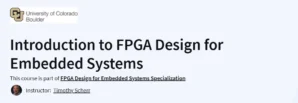What you will learn in Economics of Money and Banking Course
Modern Monetary System: Understand the evolution and structure of the contemporary monetary system, including the roles of banks, central banks, and shadow banks.
Money Hierarchy: Explore the natural hierarchy of money, distinguishing between different forms of money and their functions in the economy.
Banking as a Clearing System: Learn how banks operate as a clearing system, facilitating payments and maintaining liquidity in the financial system.
Market Liquidity and Dealers: Examine how dealers provide market liquidity by absorbing temporary imbalances in supply and demand.
Financial Crises and Innovations: Analyze the causes and consequences of financial crises, and the innovations in monetary policy that have emerged in response.
Program Overview
Introduction to the Monetary System
⏳ 32 hours (3 weeks at 10 hours per week)
Understand the foundations of modern monetary theory and the financial system.
Money and Its Functions
⏳ 32 hours (3 weeks at 10 hours per week)
Study the different forms of money, including currency, bank deposits, and digital money, and their respective roles in the economy.
Banking as a Clearing System
⏳ 32 hours (3 weeks at 10 hours per week)
Learn how banks operate as intermediaries between borrowers and lenders, and their role in the broader financial system.
Financial Markets and Liquidity
⏳ 32 hours (3 weeks at 10 hours per week)
Examine how financial markets work, the concept of liquidity, and the role of dealers in providing market stability.
Financial Crises and Policy Innovations
⏳ 32 hours (3 weeks at 10 hours per week)
Analyze the causes of financial crises, how they affect the global economy, and the policy innovations designed to address them.
Policy Proposal
⏳ 32 hours (3 weeks at 10 hours per week)
Develop a proposal addressing a current issue in the money and banking system, using the knowledge gained from the course.
Get certificate
Job Outlook
Proficiency in Money and Banking is valuable for roles such as:
Financial Analyst
Investment Banker
Economic Consultant
Central Bank Economist
Skills acquired in this course are applicable across various sectors, including:
Government agencies
Central Banks
International financial institutions
Private financial institutions
Completing this course provides foundational knowledge for those pursuing careers in finance, banking, and monetary policy.
Specification: Economics of Money and Banking
|
FAQs
- Understand the structure of modern banking systems.
- Learn how central banks manage money supply.
- Study credit, interest rates, and financial markets.
- Explore connections between finance and the real economy.
- Beginner-friendly with step-by-step explanations.
- No prior degree in economics required.
- Uses real-world examples for clarity.
- Suitable for students, professionals, and policymakers.
- Ability to analyze banking and credit systems.
- Skills in interpreting monetary policy.
- Understanding of global financial risks.
- Tools for applying economic theory to practice.
- Study past and recent financial crises.
- Learn how central banks respond to economic shocks.
- Understand global monetary cooperation and conflicts.
- See how banking influences daily financial life.
- Careers in banking and financial institutions.
- Opportunities in government and policy advisory roles.
- Pathways to consulting and economic research.
- Strong foundation for graduate studies in economics or finance.





